THE OLYMPIAN

ROAD TO LONDON




The Olympic Games are upon us and we, the U.S. Olympians and Paralympians, are ready, eager and able, to celebrate by deeds, our love for the movement and our long standing winning tradition. As President of the greatest Olympians in the world, I am humbled by the honor that Olympians bestowed upon me eight years ago. But, this pales in comparison to the faith that you put in my vision to build a legacy for the future.
Last year I envisioned a national program to strengthen our local chapters and to encourage our communities to become more closely connected to the Olympic Movement through participation. After discussing my vision with the Olympian Board of Directors, they voted unanimously to support the Walk to London 2012 program. This program proved to be very successful in reaching over 15,000 people to join together to walk for our Olympic Team. Even the First Lady’s initiative, “Let’s Move” took notice of the program and partnered with the Olympians to support our Walk to London 2012. More than 250 Olympians joined the Walk with thousands of citizens around the nation.
I want to thank Anne Warner Cribbs for taking the Walk to London 2012 idea and making it a major success. Anne is living proof of the adage, “give a busy person a task and they will make sure it gets done.” I am impressed and indebted to her and her staff for organizing the Walks nationwide with little money and nothing but our praise to compensate for the work that they have done.
I would be remiss if I didn’t thank the CEO of the USOC, Scott Blackmun, for supporting this program. Scott understood the vision and invested in it. His support was critical in making the program a huge success.
I want to also thank the Chapter Presidents for the work that they did to organize each Walk event. This was very busy year with the Walk to London 2012 events. The Chapters also worked on Olympic Day and World Fit programs that are ongoing. If you receive this newsletter and haven’t gotten involved in a program, I encourage you to talk to your Chapter President about plugging into one of these worthwhile Olympian projects. As “protectors of the Olympic Flame,” we must continue to help it shine by being torchbearers of Olympism. Thank you to all who have given your valuable time to keep the flame burning!
Finally, we will be welcoming a new group of Olympians over the next couple of months and I hope that you will join me in making them feel a part of our Association. On many of the Walk to London 2012 events we gave a special send off to those who are going to London to compete. We hope that is some inspiration for their success at the Games. We will find out soon. Whenever a new group of Olympians join our group it makes us stronger. As the newest representative of excellence, we expect these Olympians to join us in renewing our focus on the Olympic Ideals!

All things are possible; where there is a will, there is a way. Take a look at the precedent U.S. Olympians Association President, Willie Banks, set by launching a new program promoting 2012 Olympic Games. He confidently named it “Walk to London 2012.” From Los Angeles, Calif. to Washington, D.C., knowing that Olympians, Paralympians and U.S. Olympic supporters would pick up the torch and rise to the occasion. Age didn’t matter as long as participants were willing, and so they connected with the masses, ordered T-shirts and mapped the path. Walkers led with the Olympic flag and stamped the mission with personal signatures of approval.
Proudly displaying the United States Flag, Willie exemplified the grit of a true leader as he led by example -- personally participating in some of the walks. It’s the pride, the honor, the distinction of representing the U.S. and demonstrating some of the planet’s finest talents. What a send off. What an unforgettable experience. Every step, every roll of wheelchairs supported the Walk to London 2012 by etching a footprint, both physically and figuratively in the history of the 2012 Olympic and Paralympic liftoff. Who but Willie would think of walking from California to London, never entertaining the thought of being stuck out in the ocean for lack of support? He did it. It comes from working with the best to achieve the best.
This all happened because one man had a dream and an iron clad belief in the spirit of the people who support and make up the fiber of the United States Olympians Association. The only obligation left is for Olympians and Paralympians to go for the GOLD! They have the will, and they know the way.
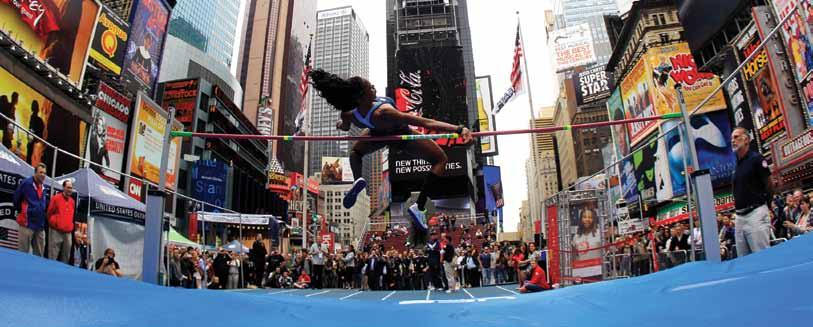
On the 100-day countdown celebration to the London 2012 Olympic Games held in the heart of New York City in Times Square, an Olympic connection was made.
Not the kind of connection that can be made online or messaged in 140 characters, but an honest-to-goodness, personal and historical connection.
Four members of the U.S. Olympic Team that competed in London in 1948 shared the stage with four U.S. athletes who very well might compete in the same city when the Games are held this summer. Representing the 1948 team were track and field gold medalists Alice Coachman and Mal Whitfield, diving champion Sammy Lee and member of the U.S. gold medal-winning basketball team, Ray Lumpp. The four current athletes were Chaunté Lowe, Jesse Williams, Brittany Viola and Maya Moore.
“This is the history and the future of the Olympics,” said four-time Olympic gold medalist John Naber, who emceed the event.
The group of athletes who will compete in London gave the members of the 1948
team American flags. Those flags had 48 stars, which was the American flag back in 1948.
“This was my first time meeting Alice Coachman,” said an emotional Chaunté Lowe, who hopes to follow in Coachman’s footsteps as another African-American woman champion in the high jump. “I got a chance to speak with her daughter, too. It means so much to me because she paved the way. She was the first AfricanAmerican woman to win a gold medal in track and field and then to find out that
“This is the history and the future of the Olympics,” said four-time Olympic gold medalist John Naber
she did it in London … wow. That puts a lot of pressure on me.”
A two-time Olympian, Lowe is the American-record holder in the event (6-7 ½ set earlier this year in indoor
competition) is expected to contend for gold this summer.
Like Lowe, Jesse Williams also has dreams of gold. The gold medalist at the 2011 World Championships in the high jump, Williams was paired with Tuskegee Airman and five-time Olympic medalist Mal Whitfield during the flag ceremony. When asked about his favorite memory from the 1948 Games, Whitfield smiled and said, “I was a winner.”
A lot has changed since 1948, the last time London held the Games. For starters, the 1948 Games were a sign of hope since they were the first Olympic Games to be held in 12 years in the wake of World War II.
Herb Douglas, a bronze medalist in the long jump in the 1948 Games, recalled much of London showing decay following the war but added, “What was most important to us was that they had the Olympic Games at all.”
Back in 1948, about 4,100 athletes competed in the Games. This summer, 10,500 athletes are expected to compete in London for the Olympic Games, set for July 27-Aug. 12, and an estimated 4,200
athletes will convene in the city for the Paralympic Games Aug. 29-Sept. 9.
And it was quite a different way of traveling back in 1948, too. The U.S. team set sail on S.S. America for a seven-day boat ride to compete in London. Runners continued their training by plodding along the promenade deck. Conditions for the athletes in London in 1948 were not quite as grand as they will be in 2012. Douglas recalled that the stadium did not have lights so some events, such as discus, were measured in the dark with automobile lights to help officials.
Another difference is gender equality. Back when Ray Lumpp was shooting for gold in basketball in London, there were no women doing the same in the Olympic Games. (The women’s game was added to the Olympic program in 1976.) So when Maya Moore, who was named to the U.S. Olympic women’s basketball team, handed Lumpp an American flag, it also marked a new era in sports -- one of today’s best female players connecting with one of the men’s greats.
In London this summer, women will be
competing in every sport as the men for the first time. The 2012 Games marks the first time women will be competing in boxing, and two American women have punched their tickets to London: Marlen Esparza and Claressa Shields. A third woman, Queen Underwood, is awaiting
to make three Olympic Games, is looking forward to seeing the women compete.
“They’re tough,” Warren said. “We’re going to bring some medals home.”
The clock is quickly ticking away for
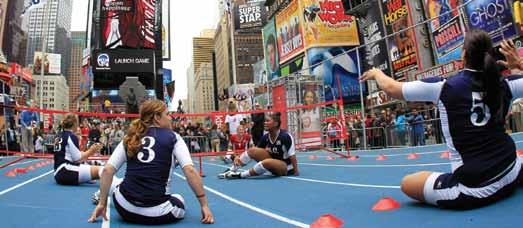
a decision as to whether she, too, will compete this summer.
Rau’shee Warren, the first American boxer
American athletes, and many of them will have to wait until the bitter end to find out if they will make the team. The month of June featured Olympic Trials in many
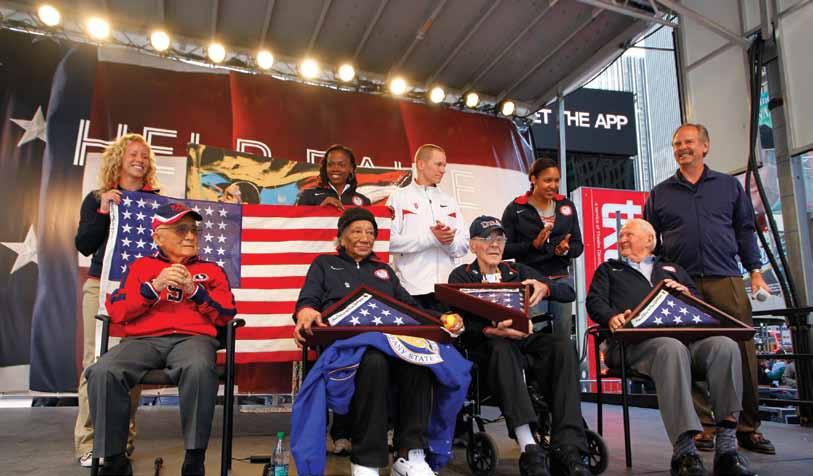
sports --- diving, swimming, track and field and gymnastics.
Julie Zetlin, a rhythmic gymnast, qualified for a spot on Team USA back in February.
“That is one thing that is awesome for me is that I already know I’m going,” said Zetlin, the 2010 U.S. national champion.
Zetlin, who lives and trains in Maryland, has enjoyed knowing early that she made the team so she could help friends and family make the trip to London with her.
“I have a whole posse coming,” Zetlin said with a laugh. “My grandparents and parents are coming and even my foot and knee doctors are coming.”
In these Games, American athletes plan on taking the Olympic motto of faster, higher, stronger to even greater levels.
Michael Phelps, who already has 14 Olympic gold medals and two bronze, could become the all-time leader for most Olympic medals should he win three medals in London. A gymnast who represented the Soviet Union named
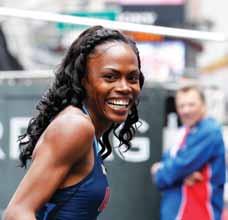
Meanwhile, on the women’s side of swimming, Natalie Coughlin, already a winner of 11 Olympic medals, will vie for more Olympic glory in London. And teenage sensation Missy Franklin is expected to make a big splash in what would be her Olympic debut this summer.
In these Games, American
athletes plan on taking the Olympic motto of faster, higher, stronger to even greater levels.
On the track, Allyson Felix will contend for medals in both the 100 and the 200, and Trey Hardee and Ashton Eaton, have a chance to medal in the decathlon.
All of the drama will unfold in London, which will make history of its own simply by hosting the Games. This summer, London will be the first city to host the Games three times; in addition to the 1948 Games, London also played host in 1908. And the concept for the
field gold medals in London and two more four years later at the 1952 Games in Helsinki, joked that he is excited to “revisit the scene of the crime”.
Thanks to sponsor, Omega, Dillard will be traveling to London along with his daughter and three grandchildren. Dillard lives with them in Richmond Heights, Ohio, a suburb of Cleveland. He will be at some of the track and field competition, watching America’s newest generation of athletes competing for Olympic glory. At the same time, his family will be able to relive some of his own Olympic history.
“My daughter and grandchildren will be able to see where their dad and granddaddy won the Olympics,” Dillard said. “That means a lot to me.”
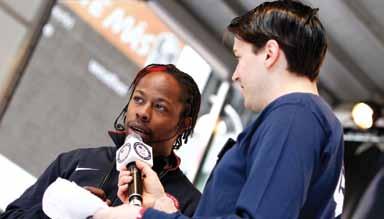
Larisa Latynina from 1956-64, amassed 18 total Olympic medals. Phelps, who captivated the country’s attention four years ago in Beijing when he won a record eight gold medals, still has to qualify for London at the Olympic Trials in Omaha, Neb. He has already said publicly that London, which would mark his fourth trip to the Olympic Games, would be his last.
Paralympic Games was born in London by Dr. Ludwig Guttmann, who worked at Stoke Mandeville Hospital with many war veterans who suffered injuries.
And several of those U.S. athletes who competed in London back in 1948 are planning on making a return trip (by plane this time) for the 2012 Games. Harrison Dillard, who won two track and
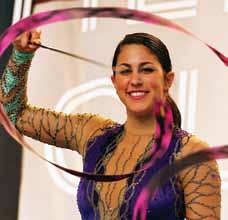
Track and field Olympian Chaunte Lowe of the United States reacts during a high jump demostration at the Team USA Road to London 100 Days Out Celebration.
Olympic boxer Rau’shee Warren speaks on stage during the Team USA Road to London 100 Days Out Celebration.
London Olympian and rhythmic gymnast Julie Zetlin participates in a demonstration during the Team USA Road to London 100 Days Out Celebration.


Katrina Radke
About the Author
Katrina Radke, MFT, is an Olympian, internationally recognized therapist, college psychology instructor, and a peak performance and health coach for many fields, including business, sport psychology, fitness, wellness and nutrition. She is a motivational speaker for corporate, educational and public events, and works with top physicians
and health professionals. She also is an endorser, and actor.
Her swimming accomplishments include winning four gold medals in major international competitions, 5th place at the 1988 Olympics, United States cocaptain, former American record holder, youngest U.S. National Team Member at age 14 and United States National Champion in 1990.
Katrina’s health story is inspirational as she competed again in the 2004 Olympic Trials, placing her in world rankings again after 12 years of a debilitating disease.
Katrina has served on the Board of Directors and as Director of Olympian Relations and Spokesperson for the Bay Area Sports Organizing Committee
(BASOC) in San Francisco advocating for San Francisco’s bid for the 2012 Olympic Games, and championing community sports programs. She has worked in the corporate world as a business executive. She and her husband, Ross Gerry, Olympic and former Stanford coach, reside in MN, and run a peak potential and health business, wecoach4u.com, coaching both athletes and non-athletes. She empowers others to find their true selves as they fulfill their potential and feel satisfied within.
Keep up-to-date with Katrina’s activities and appearances at katrinaradke.com, and follow her on Facebook (/katrinaradke) or her tweet track (@katrina_radke).
Jim Thorpe took the world by storm at the Stockholm 1912 Olympic Games and to this day ranks as one of the greatest athletes of all time.
By Doug Williams, Red Line EditorialBefore Justin Lenhart took his current job, he knew a little bit about Jim Thorpe, but not much.
Thorpe was just a name from the past, one of many bygone stars from an era of grainy, black-and-white photos that seem so ancient when viewed from the fullcolor, high-definition 21st century.
There are no YouTube videos of Thorpe that show off his athletic grace and power. From the long-distance lens of time, it’s hard to accept Thorpe as a three-dimensional superstar rather than a dated, stiff, two-dimensional image in a book or on a web page.
“I knew about him, that he won a couple of gold medals and that he was an outstanding football player at Carlisle,” Lenhart said. “That’s all I ever knew.
“I’ve learned everything I need to know about him in the last three years, though. That’s for sure,” he added with a laugh.
Today, Lenhart is the Museum Director at the Jim Thorpe Association and Oklahoma Sports Hall of Fame in Oklahoma City.
Since taking the position, Lenhart has read volumes about Thorpe, who grew up in Oklahoma as a member of the Sac and Fox Native American nation. Lenhart has met Thorpe’s family and talked about Thorpe’s legacy and place in history with sports writers, archivists and historians.
Now, on the 100th anniversary of Thorpe’s epic performance at the 1912 Olympic Games in Stockholm, Lenhart is absolutely sure of Thorpe’s prowess and believes the passage of time should take nothing away from his achievements. “He’d have to rank as one of the greatest
athletes ever, just by the numbers,” said Lenhart, ticking off Thorpe’s achievements: gold medals in the decathlon and pentathlon at Stockholm, college football AllAmerican at Carlisle, pro football star and major league baseball player. “The numbers he put up on the football field were phenomenal. He never left the field. And then what he did at Stockholm has never been matched. …
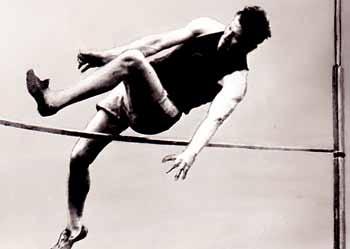
“The first half of the 20th century, he was probably the greatest, and I think you would have to put him on the list of greatest American athletes ever, if not worldwide.”
Even before Thorpe boarded a ship for Stockholm, he was a bona fide star.
As an All-America running back and defensive back at Carlisle Indian Industrial School in Pennsylvania, Thorpe in 1911 scored 25 touchdowns in leading his team to an 11-1 record.
Carlisle that season was proclaimed by some to be the national champion, and Thorpe, who also handled Carlisle’s punting and kicking, was the biggest reason. Though not big at 6-foot-1 and about 190 pounds, he was exceptionally strong and fast.
Thorpe, who also had competed in track and field at Carlisle, (some accounts suggest he was the only athlete on the team) went to the U.S. Olympic Trials in New York and qualified for the Games in the long jump, high jump and pentathlon.
Because of his success in the pentathlon,
where he won three events and finished second in the other two he also was designated to the Olympic decathlon, though he’d never competed in the event.
At Stockholm, where the Games spanned nearly two-and-a-half months (May 5-July 27), Thorpe became the biggest story by dominating both multisport events.
In the pentathlon, held over just one day (July 7), Thorpe won four of the five events: the long jump, 200 meters, discus and 1,500 meters and placed third in the javelin to easily win the gold medal.
A week later, Thorpe began the first Olympic decathlon, which was held over three days (today’s event is held over two days). Again he dominated, winning four events: the shot put, high jump, 110-meter hurdles and 1,500 meters while setting a world record of 8,412 points.
The event culminated with his victory in the 1,500 meters, in which he ran a decathlon-record 4 minutes, 40 seconds. His victories were a stunning achievement. Upon presenting Thorpe with his gold medals at the Closing Ceremony, Swedish King Gustav V reportedly told the athlete, “You, sir, are the greatest athlete in the world.” To which Thorpe replied, “Thanks, King.”
Years later, Thorpe would call the achievements the highlight of his life.
Though Thorpe had been well known before going to Sweden, the fame he achieved at the Olympic Games made him a star, both nationally and globally.
“It was Stockholm that really made him one of the first international superstars,” Lenhart said. Thorpe’s name was in newspaper headlines across America, and he was greeted with a ticker-tape parade in New York City.
Said Thorpe after coming home to a hero’s welcome in New York, “I heard people yelling my name, and I couldn’t realize how one fellow could have so many friends.”
“He was the first to transcend borders, just because of his accomplishments at Stockholm,” Lenhart said. “People were so amazed about what he was able to do.”
Stockholm, of course, was hardly the final chapter of Thorpe’s athletic career.
At age 25, he still had an All-American senior season ahead at Carlisle in 1912. He would become a professional football star with the Canton Bulldogs and lend his name and star power to the fledgling National Football League, which was organized in 1920. Thorpe would also play six seasons as a major league baseball player, becoming a gate attraction for John McGraw’s New York Giants.
He has been elected to the halls of fame of both college and pro football, and his statue greets visitors at the entrance to the Pro Football Hall of Fame in Canton. He is in the U.S. Olympic Hall of Fame and USA Track and Field Hall of Fame.
In the age of specialization, it’s hard now to fathom how talented an athlete he was, in so many sports.
Lenhart marvels at the tales of his speed and strength and the fact that a poor kid from “out of nowhere” could be the best at anything he put his mind to.
“He apparently was just a man out of his time athletically in a lot of ways,” Lenhart said. “A man who couldn’t probably exist today in modern athletics. I mean, if a kid’s 14, 15 years old and has ability toward a certain sport, that’s what they gear him or even her toward. So the days of [multisport stars such as] Bo Jackson and Jim Thorpe are over.”
When James Francis Thorpe was born, his mother called him Wa-tho-huck, a Sac and Fox name meaning Bright Path. But Thorpe’s path was not entirely bright. In later years, he struggled with alcohol and financial problems. And soon after the 1912 Games, reports surfaced that Thorpe had taken small payments to play baseball in the summers before the Olympic Games. At the time, the Olympic Games were reserved for amateur athletes.
Thorpe admitted what he had done — taking money was a common occurrence at the time when college athletes often played under assumed names when they needed money — but Thorpe made the mistake of using his own name.
Wrote Thorpe in a letter to the Amateur Athletic Union: “I hope I will be partly excused by the fact that I was simply an Indian schoolboy and did not know all about such things. In fact, I did not know what I was doing wrong, because I was doing what I knew several other college men had done, except that they did not use their own names.”
In 1913, the AAU stripped him of his amateur status, and the International Olympic Committee did the same, also taking away his medals.
Though the IOC reversed its decision and restored Thorpe’s medals and records in 1982, the cloud today remains over his name.
Lenhart says many visitors to his museum in Oklahoma City don’t know much about
Thorpe, but they know there was some sort of scandal.
“It’s unfortunate,” Lenhart said. “If you do have a younger person or somebody who’s not necessarily into sports, doesn’t know anything about Oklahoma history or whatever, they say, ‘Well, didn’t he have his medals taken away?’
“You know, the story is convoluted. I always tell people, ‘Yeah, but look into it. Look at the feats he accomplished. He wasn’t on steroids, he wasn’t on HGH. It wasn’t like he was getting paid an exorbitant amount when he was making money for those Carolina and Oklahoma minor-league teams that got him in trouble. People were quick to sell him out.”
One hundred years after his exploits at Stockholm, Thorpe is still considered by many to be one of the greatest athletes of all time. In 1950, he was overwhelmingly voted the greatest American athlete of the first half of the 20th century. In 2001, ABC’s “Wide World of Sports” designated him the Athlete of the Century. And ESPN placed Thorpe No. 7, just behind Jesse Owens and ahead of Willie Mays on its list of 100 greatest North American athletes of the 20th century.
Though his star has dimmed as the decades have slid away, those who watched him compete never forgot him. “[Jim Thorpe] was the greatest athlete who ever lived,” said 1912 U.S. Olympic teammate Abel Kiviat, who won a silver medal in the 1,500 meters at Stockholm. “What he had was natural ability. There wasn’t anything he couldn’t do. All he had to see is someone doing something and he tried it … and he’d do it better.”
The 2012 election will be done by postal mail and possibly by electronic mail.
Each candidate must have been selected onto a United States Olympic Team.
As stated in the United States Olympians Association Constitution ARTICLE V, Membership,
Section 3: Only members who were Olympic Games competitors representing the United States shall be officers of the USOA. In order to be placed on the official ballot, all candidates’ candidacy application forms must be postmarked by July 15, 2012. All candidacy application forms postmarked on or before that date will be accepted. The Election/Nominating Committee will review all candidates for eligibility, legitimacy and compliance. Candidates who have properly submitted their candidacy forms and are eligible and in compliance will have their names and statements appear on the official ballot. Candidates who submitted candidacy forms incorrectly or were nominated after the July 15, 2012 postmark date may still run for a United States Olympians Association officer position, however, their name will not appear on the official ballot and their platform statement will not be distributed through the Olympian newsletter or any United States Olympians Association office mass mailing.
The Following Dates Are The Chronological Order In Which The Election Process Will Take Place
June 4, 2012 – Campaign Requirements and Procedures mailed out to all members of the United States Olympians Association.
July 15, 2012 – All candidacy application forms must be postmarked on or before July 15, 2012 to have candidate’s name appear on the official ballot. A candidate may be nominated after July 15, 2012 but the name will not appear on the official ballot. USOA members may choose to “write-in” a candidate.
July 24, 2012 – Election/Nominating Committee completes verification on all candidates’ eligibility and compliance for official ballot.
September 15, 2012 – The United States Olympic Committee/ United States Olympians Association office mails out official ballot to all members of the United States Olympians Association.
October 7, 2012 – In order for the vote to count, the Alumni must have their mail-in ballot postmarked no later than October 7, 2012.
October 14, 2012 – Ballots will be tallied by Waugh & Associates, P.C., Certified Public Accountants in the presence of the Chairman of the Nominating Committee and/or a United States Olympians Association office staff. Ballots will be tallied several times to ensure accuracy.
October 14, 2012 – Announcement and notification of new officers.
November/December, 2012 – Officers-elect and departing officers meet at a time and place TBD to allow installation
1) Obtain candidacy form from the United States Olympians Association office
2) All candidacy application forms must be completed and returned postmarked by July 15, 2012
3) Platform statements must not exceed 250 words which may be submitted with candidacy application form
4) A headshot photo may be included and is encouraged
5) All candidacy application forms must have a postmark by July 15, 2012 or earlier in order to be reviewed by the Nominating Committee for compliance
6) Official ballot to be mailed September 15, 2012 to all United States Olympians Association members
7) All ballots must be received with an “on or before postmark” of October 7, 2012 to be counted
8) Ballots will be counted on October 14, 2012
9) Results of election will be announced at an appropriate time to allow installation of newly elected officers
1) Election Day is October 14, 2012
2) All ballots must be signed by the voting individual.
3) Space will be available for write-in votes (candidate must be eligible).
4) Waugh & Associates, P.C., Certified Public Accountants will assist the Chairman of the Nominating Committee and/or United States Olympians Association staffer in tabulating the ballots (multiple counts to ensure accuracy).
5) The candidate with the most votes for the office of President will be named to that office.
6) The three candidates receiving votes from higher to lower in subsequent order will be named as Vice Presidents and are considered officers of the United States Olympians Association.
7) In the event of a tie the United States Olympians Association Board of Directors and newly elected officers, not involved with the tie, will vote to break the tie. If a tie occurs after this procedure the President of the United States Olympians Association will break the tie.
8) The newly elected officers will be invited and expected to join the United States Olympians Association President and Vice Presidents at a time and place to be determined to allow installation.
Candidacy forms should be mailed to:
Cynthia E. Stinger, Manager
United States Olympians Association
United States Olympic Committee
One Olympic Plaza
Colorado Springs, CO 80909-5760
Olympian Hotline: 800-717-7555
C andida C y a PP li C ation F or M
u nited s tates o ly MP ians a sso C iation-Mission s tate M ent
The U.S. Olympians will foster the Olympic Spirit in each community, motivate and encourage youth, develop camaraderie and honor those who have shared the unique experience of representing the United States at the Olympic Games.
A candidate can run for any or all of the available offices. Please declare for which of the two offices you are seeking, President (1) and/or Vice President (3). The person named below is hereby designated as an official candidate for the following office(s). Write in an X where applicable.
q President (1) q Vice-President (3) q Both
(Optional) Photograph enclosed: yes / no
(Optional) Platform Statement: (not to exceed 250 words) yes / no
All Candidacy Application Forms will be reviewed by the Election/Nominating Committee for compliance and legitimacy. The Nominating Committee must receive Candidacy Application Forms no later than July 15, 2012 for your name to appear on the official ballot. All write-in candidates not previously identified must meet the same criteria before assuming any office.
Signed: Date: Candidate
Following his election as president of the World Olympians Association, Joël Bouzou asked H.S.H. Prince Albert II of Monaco to become the new patron of this unique worldwide organization uniting all 100,000 athletes to have competed in an Olympic event. The sovereign prince of Monaco immediately accepted and his role was unanimously approved by the WOA board members and by the president of the International Olympic Committee, Dr. Jacques Rogge. The sovereign succeeds Juan Antonio Samaranch, who founded the WOA in 1994 and was patron until his death in 2010.
Himself a fine athlete, H.S.H. Prince Albert II is the only head of state to have participated in five Olympic Games in bobsleigh (Calgary 1988, Albertville 1992, Lillehammer 1994, Nagano 1998 and Salt Lake City 2002). He has also been a member of the International Olympic Committee since 1985.
A passionate champion of the cause of peace and social progress through sport for many years, H.S.H. Prince Albert II will full-heartedly support and promote the WOA’s new ambition and mission: serving Olympians during and after their careers, and serving society.
WOA President Joël Bouzou declared: “It is a tremendous honor for the World Olympians Association to have H.S.H. Prince Albert II of Monaco as the new patron of our organization. He is an Olympian and a true humanist who has always believed the values of sport can
change lives and can change society for the better. His involvement and advocacy will greatly increase our influence and will make a huge difference to convince new stakeholders that Olympians across the globe can and should contribute to improve the world in which we live. I can’t thank him enough for his support.” On Joël Bouzou’s recommendation, Swedish alpine ski champion and former IOC Member Pernilla Wiberg was also appointed member of the WOA executive board.
Pernilla is one of the few skiers to have won medals in all five alpine ski disciplines (combined, slalom, giant slalom, downhill and Super G). Her achievements are exceptional: two gold medals in the Albertville and Lillehammer Games, four world championship titles between 1991 and 1999, a victory in the 1997 world cup, 24 racing medals (14 slalom, 3 Super G, 3 combined, 2 downhill and 2 giant slalom) and no less than 61 appearances on the winners’ podium.
Pernilla was a member of the International Olympic Committee from 2002-10 and she participated in many of its commissions, including the athletes’ commission, sport and environment, ethics and coordination of the 2010 Olympic Games and 2010 Youth Olympic Games. She also serves as president of the athletes’ commission for the International Ski Federation.
Following these appointments, the new WOA organizational chart is as follows:
H.E. Juan Antonio Samaranch, founder
H.S.H. Prince Albert II of Monaco, patron
Dr. Jacques Rogge, Honorary president
Mr. Joël Bouzou, president (FRA)
Mr. Anthony Ledgard Grimm, secretary general (PER)
Mr. El Hadj Amadou Dia Ba , first vice president (SEN)
Mr. George Andreadis, second vice president (GRE)
Mr. Patrick Singleton, treasurer (BER)
Dr. Liston Bochette, executive board (PUR)
Mr. Alper Kasapoglu, executive board (TUR)
Mr. Cor van Aanholt, executive board (AHO)
Mr. Dick Fosbury, executive board (USA)
Ms. Pernilla Wiberg, executive board (SWE) (appointed)

Overview
USA HOUSE
Hours of Operation
• Olympic Games: Friday, July 27th – Sunday, August 12th 10:00 am – 1:00 am
If you were not able to register early and are planning on being in London, please send, via email, your arrival /departure dates, where you will be staying and your contact info while in London to cindy.stinger@usoc.org. Olympians will be credentialed throughout the Games and will receive 2 passes good for 2 visits for guests. Credentials and guest passes can be picked up at USA House.
This is what we are providing our Olympians while in London: Each Olympian is allotted one all-access USA House pass for the duration of the games. This pass will have your name on it and can be picked up at the USA House front desk. In addition to your USA House pass you will also receive two individual day passes for guests. To bring any additional guests into the house with you (beyond your two allotted guest passes) the standard access fee would apply. I have included the pricing information for those passes below.
Additional day passes are available for purchase for the following fees:
Single All Day pass: $200/per person
Single Evening pass (5pm - 1am): $150.00/per person
Services
–Retail Store
• Olympic Games: Friday, July 27th –Sunday, August 12th 10:00 am – 10:00 pm
–Hospitality Lounge
–Live Feed
Location
USA HOUSE
• Royal College of Art
Kensington Gore
London SW7 2EU
• Located in the Borough of Westminster
• Within walking distance to the upscale shopping area of Knightsbridge, home of Harrods and Harvey Nichols
• Directly across from Hyde Park, home to Triathlon and Marathon Swimming and a live site for LOCOG
• 1.4 miles from the IOC hotels and Hyde Park Corner – 25 minute walk
• Closest Tube Stations: South Kensington or Gloucester Road, approximately 10-15 minute walk
• Two (2) floors and an upper deck with a view of Royal Albert Hall
Opportunities
USA HOUSE
• Interact with fellow Olympians and current U.S. Olympic Team Members
• Attend Special Events
• Concierge Service
• Business Center
Frequently Asked Questions
USA House
WhenwillIreceivemypasses?
–You may pick up your passes at USA House beginning Monday, July 23rd during Soft Opening operating hours
IWhen will I receive my pass and 2 guest passes?
–You may pick up your passes at USA House beginning Friday, July 27th
Arepassestransferable?
–We have converted all passes to day passes to eliminate the transferring process. Each day pass is a one-time usage for one person.
May I split one day pass into two evening passes?
–No, once a day pass is activated, it is only good until 1:00am that morning when USA House closes.
HowdoIusemypass?
–Each pass will have a bar code and will need to be scanned in and out at Registration for access to USA House
Whathappensatregistration?
–At registration, you need to present a day pass and photo identification. The pass is scanned and the bar code is activated under your name. When you leave USA House, you will need to scan out the day pass again at registration. Once the pass is activated you can enter multiple times throughout the day in an expedited line. The pass will deactivate at 1:00am
Areyoutrackingmebybarcodeonapassor byname?i.e.maysomeoneelseusemypass later in the day, or is it assigned to me once activated?
–Once a day pass is activated, it is assigned to the individual utilizing the pass. It cannot be transferred to another guest throughout the day, as upon each entry you will be asked to present photo id.
MayIcomeintoUSAHousemultipletimesin onedayonaone-daypass?
–Yes, the bar code on the pass, once scanned, allows access throughout the day it was activated, and will expire at 1:00am when the USA House closes for the day.
What do I do if I lose a pass that’s been activated?
–Once a pass is activated, your name is connected to the pass. When you arrive at USA House, present your photo id matching the name associated with the lost pass and a new pass will be issued and the lost pass deactivated.
–Once a pass is activated, your name is connected to the pass. When you arrive at USA House, present your photo id matching the name associated with the lost pass and a new pass will be issued and the lost pass deactivated.
Will an American runner ever win the men’s Olympic 3000-meter steeplechase title again?
By Elliott Denman (athletics, 1956)Will an American runner ever win the men’s Olympic 3000-meter steeplechase title again?
“That’s a tough one and I just don’t know,” admits Horace Ashenfelter.
And if Ashenfelter can’t tell you, who can?
He is the only American ever to win the 3000-meter steeplechase at the Olympic Games, and this July marks the 60th anniversary of his 1953 Olympic Games gold-medal performance where he set a world and Olympic record.
“The Kenyans seem to be getting more dominant [at all distances up to the marathon] and that just makes it tougher all the time for everybody else,” said Ashenfelter, who outran the Soviet Union’s Vladimir Kazantsev, the preOlympic favorite and reigning world record holder, over the final water jump to register his epic 1952 triumph.
In 1948, Ashenfelter was a Penn State student and World War II Army veteran who placed fifth in the 1948 USA Olympic Trials 5,000-meter race, missing a trip to the London Games by two spots. Four years later, however, he was at the top of his game and ran 1-2 alongside his brother, Bill, at the trials, paving the way to his Helsinki glory.
And he finished third in the steeplechase at the 1956 Trials, back of Chicago’s Phil Coleman and Iowa’s Charles “Deacon” Jones, to earn a trip to the Melbourne
Olympic Games. There, he was cast as defending champion. But the script didn’t work out that way, as Ashenfelter failed to reach the finals, which was won by Chris Brasher of Great Britain.
In the years since, only two Americans have medaled in Olympic Games: George Young in 1968 and Brian Diemer in 1984. The last seven gold medals have been won by athletes representing Kenya.
So it’s obvious why Ashenfelter is such a notable in American Track & Field history, as well as a major celebrity in his home town of Glen Ridge, N.J.
Thousands of runners turn out each Thanksgiving Day morning to compete
Ashenfelter is the only American ever to win the 3000-meter steeplechase at the Olympic Games
in the Ashenfelter 8-Kilometer Classic, a 4.97-mile race that starts and finishes at Glen Ridge High School. And the 2012 edition - run in mild autumn weatherproved to be one of the best in the series.
The field was so large it took nearly four minutes for the final starter to reach the starting line; all told, 2,483 runners of all ages and paces finished in their personal
salutes to Ashenfelter and their own dedication to personal fitness.
Ashenfelter was there to cheer on participants throughout the event. After, he marveled, “It’s just amazing to see so many people show up at a small-town affair like this.”
He’ll be 89 next January and, now that some health issues have been put aside, plans to start back on a modest training program. He’ll no longer leap over park benches as he did training for the steeplechase back in 1952 but will stick to a few daily miles of local running.
“I’m going to start getting back into shape,” he promises.
In excellent shape already is Mike Soroko, the Rider University graduate student and 2011 IC4A steeplechase silver medalist. Ashenfelter race finishers in 24:54.40. The women’s title went to Rebeccah Wassner, who finished in 27:50.
“It’s amazing what he [Ashenfelter] did, long before I was born,” said 23-year-old Soroko. “I’m a steeplechaser myself, so I know what a great achievement that had to be. So that’s a big reason I came outto run for him, as well as myself.”
Harrison Dillard (athletics, 1948, 1952)
Herb Douglas (athletics, 1948)
Harrison Dillard and Herb Douglas are humble, modest gentlemen with
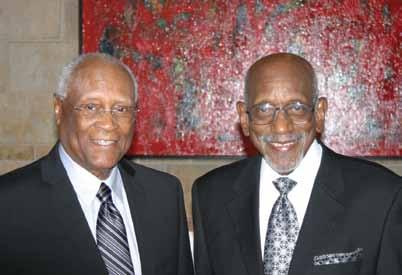
a passion for giving back. The two are not your average seniors with their long lists of athletic, Armed Forces (Harrison) and personal accomplishments. Their lifetime wish was to meet President Barack Obama.
Their names are synonymous with athletic greatness and groundbreaking achievements. Dillard is a 4-time Olympic gold medalist, the first African-American to win gold in the 110-meter hurdles and the only athlete in history to win gold in both the 100-meter sprint and 110-meter hurdles. Douglas is a bronze medalist long-jumper from the 1948 Olympic Games and is one of two men to ever score a touchdown against Notre Dame and win an Olympic Medal. He also is one of the most successful AfricanAmerican businessmen of his time.
To meet President Obama was a dream come true for these men. It was a momentous meeting between two African American athletes who broke racial barriers and the first AfricanAmerican president of the United States. All three men exchanged autographs and shared stories of their past. To top it all off, President Obama took time out of his speech to personally acknowledge Dillard and Douglas’ accomplishments.
The meeting was arranged by the Wish of a Lifetime Foundation, which was founded by Jeremy Bloom, a twotime Olympian and threetime world champion in freestyle moguls skiing. Wish of a Lifetime grants wishes to seniors who have overcome challenges in their lives. Dillard, now 88, had wanted to meet President Obama since the 2008 election.
Dr. Stacey R. Johnson was recently appointed campus president of East & Winter Park in Orlando, Fla.. Johnson previously served as vice president for academic affairs at Palo Alto College, where she served the Alamo Colleges since the early 1980s. Johnson is one of the first 10 people hired to develop Palo Alto College. Whille at Palo Alto, she served in numerous posts, including director of marketing; assistant to the president; founding faculty member for the Communications Program; chair of the Department of English, Communications and Foreign
Languages; and dean of arts, humanities and social sciences. She assumed her final position of vice president in 2008.
“I feel tremendous gratitude to Alamo Colleges, Palo Alto College and to Dr. Ana “Cha” Guzmán for all of the support and the learning we have had together through these many years at PAC,” said Johnson. “It has been a privilege to serve the students and faculty at PAC.”
Johnson, an Olympic fencer who is well known for her work with children and sports, founded the San Antonio Sports Dreams for Youth Program and has worked to support kids’ sports programming serving approximately 160,000 children annually. Among others, Johnson is in the San Antonio Sports Hall
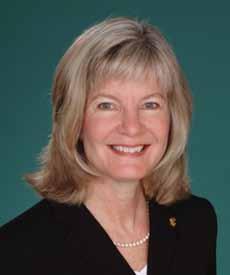
of Fame, the San Antonio Woman’s Hall of Fame and the U.S. Fencing’s Hall of Fame. Johnson has championed health and fitness throughout her tenure at San Antonio Sports Dreams Youth Program, where she serves as a member of the executive committee and also serves on the mayor’s Fitness Council.
The International Swimming Hall of Fame announced Milton Gray Campbell as its 2012 Gold Medallion Recipient. The honor was presented to Campbell at ceremonies in Fort Lauderdale.
This award has been conferred annually since 1983 to an individual who has been a competitive swimmer, water polo player, diver or synchronized swimmer and who has achieved international recognition for accomplishments outside of the pool. Past recipients of the Gold Medallion include: Ronald Reagan, U.S. Senators Barry Goldwater and Paul Tsongas, U.S. Ambassador to the United Nations Andrew Young, Congressman E. Clay Shaw, businessman and secretary of the treasury William E. Simon, businessman F. M. Kirby III and entertainers Art Linkletter, Buddy Ebsen, Esther Williams and Prince Albert of Monaco, to name a few.
Competing as an 18-year-old at Plainfield High School, Campbell captured the silver medal in the decathlon behind Bob Mathias in the 1952 Helsinki Olympic Games. Then, four years later in Melbourne, he racked up an Olympicrecord 7,937 points with the aid of his 14-second time in the 110-meter hurdles. Campbell easily survived a poor showing in the pole vault, an event he dreaded if only because it was hard to find a bamboo pole strong enough to support his 6-3, 210-pound frame.
“While Milt is best remembered in the sporting world for being the first African American to win a gold medal in the decathlon, he might just as easily have been the first in swimming,” said ISHOF CEO Bruce Wigo. “His story and the
relationship he had with his swim coach is one of the most inspirational swimming stories I have ever encountered, and it is a cornerstone of his successful career as a motivational speaker. ‘It’s not what you say to me. It’s what I say to me that matters.’”
The award will be presented at the conclusion of ISHOF’s first International Aquatic History Symposium and Film Festival, an event that examines one of the great enigmas of world cultural history: today’s lack of racial diversity in all things aquatic. For more information about the presentations and the symposium visit iahsff.com. For information about the Gold Medallion Award and the 2012 ISHOF induction weekend, visit ishof.org or call 954-462-6536
Gail Marquis received the inaugural Trailblazer Award from the Arthur Ashe Institute for Urban Health at the 18th annual Black Tie Gala, Sports Ball 2012, on April 12 in New York.
The gala, which pays tribute to Arthur Ashe and honors individuals and organizations that make significant contributions to urban communities in the areas of health, education, medical research, community service and philanthropy, recognized Marquis in honor of the 40th anniversary of Title IX. A member of the first U.S. women’s Olympic basketball team, Marquis and Team USA brought home the silver medal in the 1976 Olympic Games.
. Tennis champion, activist and humanitarian Arthur Ashe established the Arthur Ashe Institute for Urban Health
in 1992 with a simple but powerful goal: improved health care and education for America’s urban residents. Ashe knew that many preventable diseases, such as diabetes and hypertension, are the result of inadequate health care delivery, late detection and insufficient health education. Funds raised at gala will support the institute’s programs that encourage people to take a pro-active approach to their health
Pat Summit (basketball, 1976, coach -1984)
Longtime Tennessee women’s basketball coach Pat Summitt was awarded the Medal of Freedom by President Barack Obama at a White House ceremony.
Obama said that Summitt, who led the University of Tennessee women’s basketball team to more NCAA Final Four appearances than any other team, had helped pave the way for his two daughters, who are “ tall and gifted.”
“They’re standing up straight and diving after loose balls and feeling confident and strong,” Obama said. “I understand that the impact that these people have had extends beyond me. It will continue for generations to come.”
The 59-year old Summitt stepped down after 38 years as the Lady Volunteers head coach because she’s suffering from early onset dementia.
Summitt is the winningest coach in college basketball history, and took Tennessee to the Final Four a record 18 times and produced eight national championships.
Others award recipients were Madeleine
Albright, John Doar, Bob Dylan, William Foege, John Glenn, Gordon Hirabayashi, Dolores Huerta, Jan Karski, Juliette Gordon Low, Toni Morrison, Shimon Peres and John Paul Stevens.
President Obama noted that the awards ceremony was a “packed house, which is testament to how cool this group is.” Obama said the honorees have moved Americans with their words and inspired them with their actions.
On March 31, two longtime adversaries shared a hug courtside at the Pepsi Center. The next day, they shared in a tribute to coaching legends.
At halftime of the Baylor-Stanford national semifinal, UConn’s Geno Auriemma and Tennessee’s Pat Summitt were alongside other coaches of the U.S. Olympic women’s basketball team as
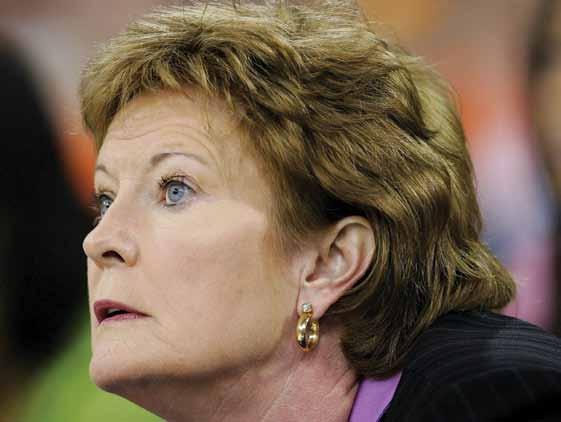
“Everybody on this stage has marked my life in profound ways,” he said.
The Medal of Freedom is the nation’s highest civilian honor. It is presented to individuals who have made meritorious contributions to the national interests of the United States, to world peace or to other significant endeavors.
they were honored for having helmed the U.S. women’s team.
Auriemma, who is leading this year’s women’s squad for the London Games, looked subdued, since his Huskies had just lost to Notre Dame in overtime. But he also smiled and joked with his fellow Team USA mentors Anne Donovan
(2008), Van Chancellor (2004), Nell Fortner (2000), Theresa Grentz (1992) and Billie Moore (1976).
Summit was the last coach announced, and the 1984 gold-medal winner brought the arena to a lengthy standing ovation. Summitt’s battle with early onset dementia has been the most poignant storyline of the 2012 women’s basketball season.
“I’m just so glad that the women got involved in the Olympics,” Summitt said in a statement provided by USA Basketball. “It meant the world to me to know there was a place to play after we played basketball in college. We could travel. We could compete. I just made some of the best friends -- ever.
“I really appreciated walking in here and seeing this. It was touching for all of us. No doubt about it.”
Summitt has eight NCAA titles and has coached a team to an Olympic gold; Auriemma has seven national championships and hopes to get gold this summer.
Jeff Stork (volleyball, 1988, 1992, 1996)
Mike Dodd (volleyball, 1996)
The Volleyball Hall of Fame announced the names of six volleyball legends who will be inducted as the Class of 2012 on Oct. 20 in Holyoke, Mass.
The 27th induction class consists of men’s volleyball players Peter Blange of the Netherlands, Mauricio Lima of Brazil, Georgiy Mondzolevski of Russia and Jeff Stork of the United States, women’s
volleyball player Lyudmila Buldakova of Russia and men’s beach volleyball player Mike Dodd of the United States.
The induction class is elected via a vote of current Volleyball Hall of Fame inductees. A total of 20 different countries are represented in the Volleyball Hall of Fame,, and after this year 112 individuals will have been inducted.
“The six inductees for the 2012 Volleyball Hall of Fame are remarkable athletes and leaders who have brought distinction to the sport over a number of years,” said Doug Beal, co-chair of the Volleyball Hall of Fame selection committee. “This induction class honors the legends of the game through both diversity of gender and country representation. Peter Blange enters the Volleyball Hall of Fame as the first representative from the Netherlands, and this continues the Hall’s mission to showcase the international spectrum being memorialized forever within its walls. Georgiy Mondzolevski and Lyudmila Buldakova of the old Soviet Union represent a positive anchor to the history of our sport while being part of formidable teams. Mauricio Lima bridges Brazil’s early success in the 1990s to the start of its current run of dominance at the start of this century. Both Jeff Stork and Mike Dodd are trailblazers in their own rights in establishing the United States as Olympic medal contenders in each quadrennial.”
The Volleyball Hall of Fame induction activities continue to grow in celebrating the accomplishments of the top volleyball players and leaders from around the world. The Hall, established in 1978, continues to create a more representative institution with inductees of both genders and disciplines – indoor volleyball and beach volleyball – coming from a wide range of countries.
“Volleyball is truly a global sport, not only with its six countries representing the 2011 inductees, but the almost 220-plus national federations associated with the FIVB making our international federation the largest sports body in the world,” Beal said.
The Class of 2012 induction festivities include a VIP reception onOct. 19 at Wistariahurst Museum, followed by a public “Meet & Greet” on Oct. 20 with the formal enshrinement dinner and ceremony taking place the evening of Oct. 20.
For additional information on attending the 2012 Volleyball Hall of Fame induction ceremony, contact the Volleyball Hall of Fame at info@volleyhall.org or visit the Hall’s website at VolleyHall.org.
Mel Pender was inducted into the Atlanta Sports Hall of Fame on June 9, 2012. Pender won gold in 1968 in the record-breaking (38.24) 4x100-meter relay alongside teammates Charles Greene, Ronnie Ray Smith and Jim Hines. Pender’s accomplishments also include setting five world records. He also served as the first African-American head coach for the U.S. Military Academy and is a three-time All-American and international champion.
been on the comeback trail since 2011, was forced to cut her efforts to make her second Olympic team short due to recurring knee problems.
“I still have the heart, drive and desire to compete and help the USA at the London Olympics,” said Johnson, who also won two senior U.S. all-around titles. “Unfortunately, it has become obvious that my left knee is not able to sustain the demands of gymnastics any longer. All I can do now is gracefully retire and thank everyone who has believed in me and my journey.
“Being given the opportunity again by Martha Karolyi and USA Gymnastics to represent the USA has been the greatest honor of this comeback,” said Johnson. “Thanks to all of my sponsors for allowing me to represent them, and their support has been a dream come true. Also, my agent, Sheryl Shade, has truly given me the chance to pursue my biggest dream while sharing my story with the world. And to my fans and friends, I will be forever grateful. To my parents, Teri and Doug, I thank you for the love you have given me. To my coaches, Liang and Li Qiao (Chow), thank you for nurturing me throughout my life in the sport of gymnastics and the lessons of sportsmanship.”
West Des Moines native Shawn Johnson, who has four Olympic and three world champianship medals, announced her retirement from competitive gymnastics on June 3, 2012. Johnson, who has
“Shawn is one of our country’s most popular gymnasts, and she has been an integral part of the USA’s success,” said Steve Penny, president of USA Gymnastics. “Her personality, smile and powerful gymnastics won both medals and fans. Shawn contributed to two of our country’s most successful teams in recent history – the 2007 World Championships Team, which won the USA’s second World team title, and the 2008 Olympic silver-medal team. As an individual, she won two World
Shawn Johnson (gymnastics, 2008)gold medals, including the coveted allaround title, and three Olympic medals. We wish Shawn the best of success as she begins her next adventure and future involvement in the sport.”
“Shawn has been an outstanding representative of USA Gymnastics
done as a role model and ambassador for our sport. We look forward to having her continue to be a part of the gymnastics movement while she pursues the next chapter of her remarkable career.”
“Shawn has brought much joy, grace, energy and great success to the
an even brighter future is waiting for her.”
“Shawn will always hold a special place in gymnastics and my heart,” said Martha Karolyi, the women’s national team coordinator. “She always showed the joy of doing gymnastics. Shawn was an excellent student in training and a fierce competitor in the arena. I will miss her, but I am confident that she will be very successful in any endeavor that she decides to pursue.”
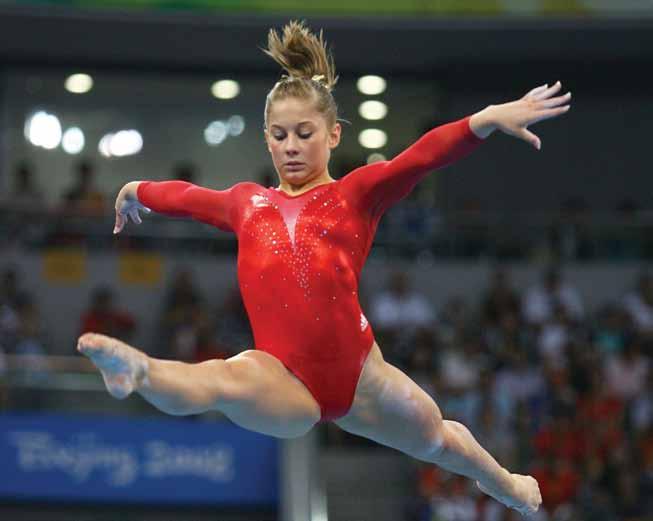
throughout her career,” said Peter Vidmar, chairman of the Board for USA Gymnastics and 1984 Olympic gold medalist. “I have tremendous respect for Shawn’s dedication and hard work during her return to gymnastics for a run at her second Olympics. And while we celebrate her competitive achievements, we also appreciate everything she has
gymnastics world,” said Liang Chow, who has coached Johnson since she began in gymnastics. “My wife, Li, and I have enjoyed the many years we have had working with her. Shawn’s dedication to gymnastics and her work ethic make her a great example for future generations to follow. Although her gymnastics career is over and we will miss her, we believe
Johnson is considering her plans for the future that include college, volunteer work and continuing to be involved in gymnastics. Johnson will make the trip to London this summer on behalf of some sponsors and have the opportunity to cheer for the USA.
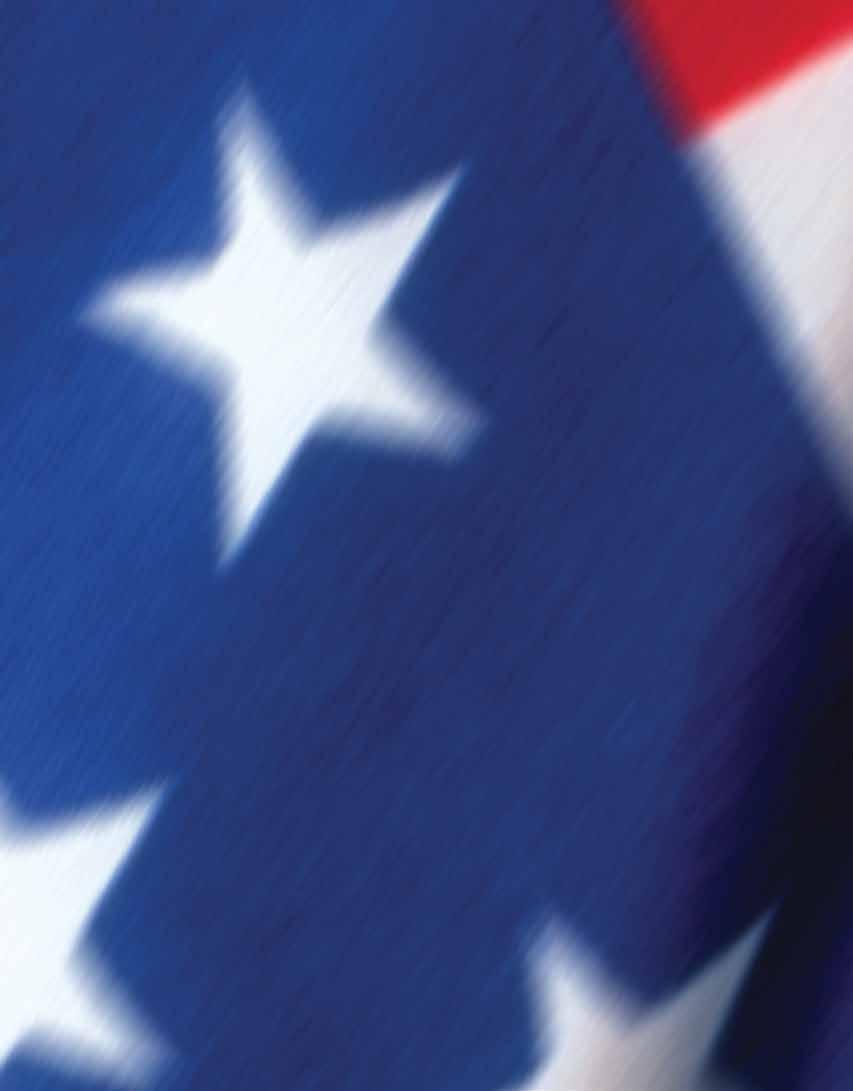
James “Kanati” Allen (gymnastics, 1968)
James “Kanati” Allen passed away on Dec. 31, 2011. He was 64.
Allen competed in gymnastics for the United States at the 1968 Olympic Games. Prior to becoming an Olympian, Allen made the 1966 world team. He attended UCLA, coached by Art Shurlock, where he majored in physics, and placed third in all-around at the 1967 NCAA championships. He later earned a Ph.D. in physics from the University of Washington.
Bob Boozer (basketball, 1960)
Bob Boozer passed away on May 19, 2012. He was 75.
His friends and family remember him for his humility and service to others.
After earning All-American honors his junior and senior seasons at Kansas State, Boozer was the No. 1 pick in the 1959 NBA draft. The 6-foot-8-inch forward retired after winning the 1971 NBA title with the Milwaukee Bucks.
One of his great joys was playing with Jerry West, Oscar Robertson and Jerry Lucas on the gold medal-winning 1960 Olympic team. He averaged 14.8 points and 8.1 rebounds during his stint with six professional teams.
Boozer and the 1960 Olympic Team were inducted into the Basketball Hall of Fame in 2010. The star-studded squad won eight games by an average of 42.4 points, and 10 of the players reached the
NBA. Boozer was a reserve who played mostly a defensive role.
“We had so many shooters on the Olympic team that he didn’t get to shoot it like he did in college,” Robertson said. “Bob never ever complained.”
The Olympic experienced forged a halfcentury friendship between Boozer and Robertson. The two spoke the day before Boozer died about projects Boozer had planned.
“Bob was a nice guy who wasn’t too talkative, and neither was I,” Robertson said. “We came from the same type of background and just hit it off. He was just a pleasure to be around.”
Boozer rarely spoke about his basketball exploits unless asked. If he used his celebrity, it was to help him give back to his hometown, particularly helping innercity youth in North Omaha.
“Bob wasn’t just a great individual for himself, but also for the city of Omaha and state of Nebraska,” Robertson said. Born and raised in Omaha, Boozer became one of the greatest players ever at Kansas State. He averaged 21.9 points in his career, and his average of 25.2 points per game as a senior is second in school history to Michael Beasley (26.2 points in 2007-08). Boozer led the Wildcats to the NCAA Final Four as a junior, and as a senior he helped Kansas State to a No. 1 ranking in the final regular-season poll.
Boozer delayed entering the NBA for a year so he could retain his amateur status for the 1960 Olympic Games. He averaged 6.8 points per game and Team USA went on to defeat Brazil, 90-63, for the gold medal in Rome.
Ella Boozer said her husband took delight in good-natured arguments about whether the 1960 Olympic Team was better than the 1992 Dream Team, which included Michael Jordan, Magic Johnson, Larry Bird and Charles Barkley. She said Bird joked with Boozer about how the 1960 Olympians had to swim across the Atlantic Ocean to get to Rome and had to live on a dollar day.
The Chicago Bulls selected Boozer in the 1966 expansion draft, and he averaged 20.4 points and 8.7 rebounds in three seasons with the team. He made his only all-star appearance in 1968 with the Bulls. Bulls teammate Bob Love said he remembered Boozer for the running hook shots.
“You couldn’t block his shot,” Love said. “He had those long arms and wide body. He couldn’t jump real high, but he had a quick shot. He’d get his shot off and get back under the hoop and put the ball back in the hole.”
Off the court, Love said, Boozer was a caring individual who was quick with a smile.
“We would call each other and go on trips together with the retired players association,” Love said. “He was always so concerned about the other players and how they were doing.”
Boozer returned to Omaha after his playing days and worked as an executive for a telephone company. He was appointed to the Nebraska Parole Board in the 1990s and volunteered at Boys Town, the home for troubled youth.
Nebraska Governor Dave Heineman said Boozer was one of the state’s great ambassadors. Boozer worked on

a number of educational programs with Heineman’s wife, Sally Ganem. He was particularly interested in helping young African-Americans achieve their goals, Heineman said.
“He never forgot where he came from,” the Heineman said.
Bob Day passed away on March 5, 2012. He was 67.
Relatively early in Day’s track career at UCLA, he was scheduled to race against one of the best two-mile runners in the nation. His chances of winning seemed slim, so the coach told him to focus on second place and earn valuable points for the team.
“He just kind of looked at me,” former Bruin coach Jim Bush said. “Then he went out and won … and from that day on, I never said he couldn’t do something.”
During the next two years, Day established himself as the greatest distance runner in the history of UCLA’s storied program, setting records in multiple events, leading the Bruins to a 1966 national championship and representing the U.S. at the 1968 Mexico City Olympic Games.
Born on Oct. 31, 1944, the southern California native grew up in San Marino. He worked in the health care industry for many years before becoming a coach at Beckman High School in Irvine, where he built the track and cross country programs from scratch.
During his college career, from 1963-66 he set school records in the 1,500- and 5,000-meter races. His times of 3:56.4 in the mile and 8:33 in the two-mile were national records at the time.
After setting the mile mark, which stood as a school best for four decades, Day told the Times, “Competition always gives you an added lift.”
Bush recalled the lanky athlete as a hard worker who was smart enough to adjust to different strategies. Day also was considered the top cross-country runner in the nation during his junior and senior seasons at UCLA, where he majored in business administration. He was captain of the national championship team, but a heel injury kept him out of the title meet.
After graduating, Day won the 1968 USA Track & Field Senior National Championship in the 5,000 meters. He also competed in Europe until an injury forced him to retire.
Each spring, UCLA’s best distance runner receives the Bob Day Award. In 2002, he was inducted into the school’s athletic Hall of Fame.
Day is survived by his wife, Jenny, and daughters Dava Voss and Amanda Day.
Francis James “Jim” Delaney (athletics, 1948)
Francis “Jim” Delaney passed away on April 2, 2012. He was 91.
Delaney is survived by his wife, Mary Lou, who was the love of his life for 65 years. In addition to his wife, Delaney is survived by his sons and their wives, Kevin and Kim Delaney, Tim and Leigh
Anne Delaney, Joe and Dana Delaney, as well as five grandchildren and five great grandchildren. He was born in Butte, Mont., and raised in San Francisco. He attended Sacred Heart High School and the University of Notre Dame.
Delaney was a World War II naval officer, serving in the pacific theatre. He was a world-class track and field athlete and competed in the 1948 London Olympic Games, winning the silver medal in the shot put. He worked with Steelcase, Inc., during most of his professional career and retired in 1987 as vice president and general manager of the west coast division in Tustin, Calif.
Delaney enjoyed flying and obtained his pilot’s license the same year as his wife and oldest son. Delaney returned to the Bay Area in 1998, where he took residence in the Fountain Grove community of Santa Rosa.
Joan Tozzer Cave (figure skating, 1940)
Joan Tozzer Cave passed away on April 15, 2012. She was 90.
Tozzer Cave was a three-time U.S. singles champion and three-time pairs champion with Bernard Fox from 193840. She and Fox were North American pairs champions in 1939. Tozzer Cave was named to the 1940 Olympic Team, but those Games were canceled due to World War II.
Born in Boston in 1921, Tozzer Cave was the second-oldest member of The Skating Club of Boston. She was inducted into the U. S. Figure Skating Hall of Fame in 1997 and was an active elector.
Off the ice, Tozzer Cave was involved in many philanthropic activities in Massachusetts, Hawaii and New Hampshire. She was a trustee of
extraordinary running talent, which put Cubberley High’s Track & Field program on the map.
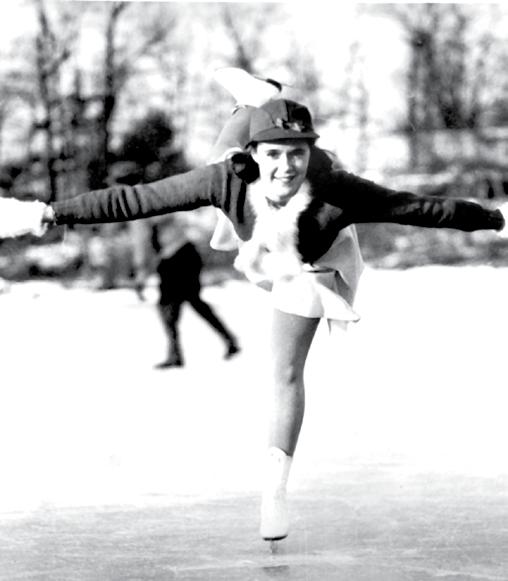
Boston’s Brigham and Women’s Hospital, serving as co-chair of the development committee, and a member of the hospital’s Heritage Society. She is survived by six children, Philip Spalding III, A. Tozzer Spalding, Anne Mock and Joan Spalding., Susan Driscoll, and William Lincoln. Tozzer Cave is survived by 14 grandchildren and 14 great grandchildren.
William “Bill” Green passed away on March 4, 2012. He was 50.
Green is most remembered for his

As a junior, he won the California state championship in the 400-meter race in 1978. The following year, he ran 45.51 in the 400 meters and set a national high school. In addition, he was a fail-safe, come-from-behind anchor in his school’s sprint relay teams.
Green was selected for the Pan American Games, though he did not compete. At age 18, he finished in the top three in the national championship meet. Three days later, he found himself on a flight to Europe to compete on the world stage.
Green collected a number of accolades, and his proudest were the Athlete of the Year Award, presented by Cubberley High, and the Peninsula Male Athlete of the Year Award, presented by the Peninsula Times Tribune.
Green ran 10.59 for the 100-meter race, 20.91 in the 200-meter race and 45.41 in the 400-meter race. – times that rival the all-time best in the Central Coast Section. To date, his 400-meter race time is ranked No. 2.
In 1980, Green realized the ecstasy and agony of his running career when he won the 400-meter race at the Olympic trials in Eugene Ore.
Even though the 1980 Olympic Games
were boycotted by the United States, Green’s memory will always carry the legacy of an Olympian.
Green is survived by his parents, William and Loretta Green; his brother, Martin (Tammy); and his sisters Lisa and Nicole.
Josiah “Joe” Henson (wrestling, 1952)
Josiah “Joe” Henson passed away on April 5, 2012. He was 90.
The younger brother of Stanley Henson, a three-time NCAA champion at Oklahoma State, Henson was born in Oklahoma on Feb. 22, 1922. Rather than follow in his brother’s footsteps, The 145-pound wrestler went to the U.S. Naval Academy in Annapolis, Md., where he was undefeated and won back-toback EIWA championships in 1943 and 1944.
Henson never had the opportunity to compete at for an NCAA title, as they were suspended during World War II; however, he was a national AAU champion in 1952. Later that year, Henson earned the bronze medal in the 139-pound freestyle division at the 1952 Helsinki Olympic Games.
Four years later, Henson became the first American to qualify as a FILA international referee and worked at the 1956 Melbourne Olympic Games. Henson also served as chairman of USA Wrestling from 1964 to 1968.
Henson was instrumental in establishing the wrestling supply company now known as Brute Wrestling. And beyond the mat, he served his country with a
long career in the Navy. As a captain, he tallied more than 400 aircraft carrier landings from 1941to 1969.
During his life and career, Henson received numerous awards and honors. He was welcomed as a Distinguished Member of the National Wrestling Hall of Fame in Stillwater, Okla. in 2006, and recently was inducted into the EIWA Hall of Fame.
John Souza passed away on March 11, 2012. He was 91.
Souza was a soccer player who earned 14 caps and scored three goals for the men’s national team. He also contributed to Team USA’s historic 1–0 victory over England in the 1950 FIFA World Cup. He was selected for a world cup all-star team by a Brazilian sports newspaper, and remained the only American ever selected to a world cup all-star team until Claudio Reyna in 2002. He is a member of the National Soccer Hall of Fame. He was born in Fall River, Massachusetts.
Souza was a member of the Fall River Ponta Delgada team that won the National Challenge Cup in 1947. and the National Amateur Cup in 1946, 1947 and 1948). In 1951, he transferred teams and proceeded to win both the National Challenge Cup and the National Amateur Cup that year.
Souza was a member of the U.S. team for both the 1948 and 1952 Olympic Games, and he played for the U.S. against Scotland at Hampden Park in 1952.
Willie May (athletics, 1960)
Willie May passed away on March 28, 2012. He was 75.
May was born in 1936 in Alabama. He attended Blue Island High School, where his prowess in hurdles earned him three state championship titles. His winning ways carried over to Indiana University, where he won seven Big 10 championships in the hurdles from 1957 to 1959.
In the 1960 Olympic Games in Rome, May took home a silver medal in the 110-meter hurdles. Three years later, he captured another silver medal at the Pan American Games.
With his competition days behind him, May followed his former high school teammate, Ron Helberg, to Evanston Township High School, where he served as Helberg’s assistant coach. The two led ETHS to four state championships in the early 1970s.
May became head track coach in 1975, and helped guide the team to 26 conference championships – including 24 consecutive championships from 1976 to 1999 – and a state championship in 1979.
In 1983, May added the title of athletic director to his list of duties, a post he held for 16 years. He also served as a physical education teacher and retired from both positions in 2000. Though he retired as head track coach in 2006, he continued to be a part of the high school, serving as an assistant coach until his passing.
May is a member of the Indiana University Athletic Hall of Fame, the Illinois Track & Cross Country Coaches Association Hall of Fame and the Chicagoland Sports Hall of Fame. He also was named the greatest athlete in the history of Blue Island High School.

Mark Lenzi passed away on April 9, 2012. He was 43.
Lenzi struck gold when he switched from wrestling to diving in the mid-1980’s.
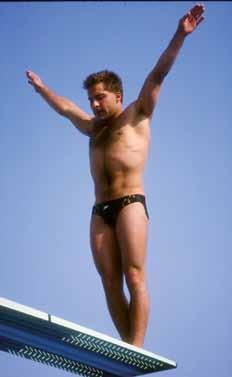
During the following next decade, he became the 1992 Olympic 3-meter springboard champion, earned a bronze medal four years later in Atlanta and became the first diver to receive a score of 100 points on a single dive.
Mark Lenzi (diving, 1992, 1996)
Lenzi was wrestling in high school when he was suddenly captivated by Greg Louganis’ remarkable Olympic performance in 1984. He quickly changed sports and dove into his new passion.
In 1989, he swept the Big 10 titles in the 1-meter, 3-meter and platform competitions, then went on to win the first of his back-to-back 1-meter national championships in 1989. He was selected as an NCAA diver of the year in 1989 and 1990.
Lenzi was just beginning to emerge on the international stage as he continued making waves.
His victory on the 3-meter board at the Barcelona Olympic Games gave the Americans their third consecutive title in that event. Four years later, following a brief retirement, Lenzi earned an Olympic bronze medal.
No American male diver has won an Olympic diving medal since 1996.
Lenzi’s impressive resume includes 18 international springboard championships. He was the first diver to score more than 700 points in an 11-dive competition on the 3-meter board and was the first American to successfully complete a forward, 4.5 somersault in competition.
After his diving career ended, Lenzi went into coaching. He helped four divers win national age-group titles with Indiana’s junior diving team and coached men’s and women’s divers at East Carolina from 2009-11.
He is survived by his wife, Dorothy; his mother, two brothers, one sister and his grandmother, Mary Cochran.
John Paul “Pete” McCaffrey (basketball, 1964)
John Paul “Pete” McCaffrey passed away on March 3, 2012. He was 73.
McCaffrey was a graduate of St. Louis University, Michigan State, and
spent most of his career working at Goodyear Tires. Among his many accomplishments, McCaffrey was a 1964 Olympic gold medalist, three time (1662, 1963 and 1964) All-American and is a member of the St. Louis University Hall of Fame. He enjoyed friends, golf and spending time with his family.
McCaffrey is survived by his wife, Zara; brother, Neil (Sally); sons, Paul (Karen) and Patrick (Deanna); daughter,
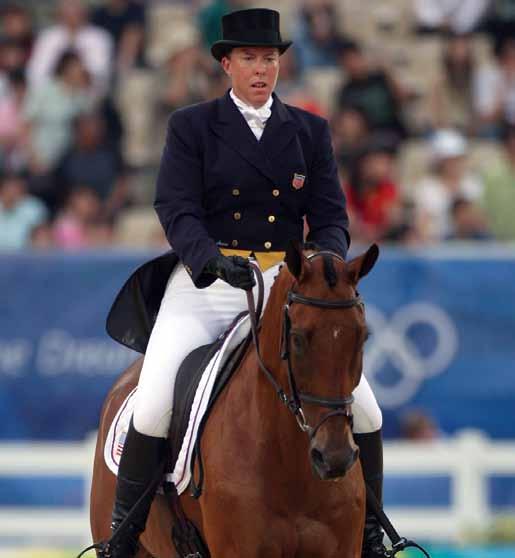
Madeline; and grandchildren, Halen, Collin, Kathryn and Sean.
Amy Tryon (equestrian, 2004, 2008)
Amy Tryon passed away on April 12, 2012. She was 42.
Tryon won the bronze medal in team eventing at the 2004 Athens Olympic Games and also was a member of Team USA in the 2008 Beijing Olympic Games.
Tryon competed for Team USA in several international competitions, and helped the U.S. bring home a gold medal at the 2002 FEI World Equestrian Games in Jerez, Spain. Four years later, Tryon won individual bronze at the 2006 FEI World Equestrian Games in Aachen, Germany. Tryon served as a firefighter for several years, retiring in 2006 in order to concentrate on riding.
She is survived by her husband of 16 years, Greg.

Dr. LeRoy T. Walker (athletics coach, 1976, and USOC president, 1992-96)
Walker, who served as chancellor
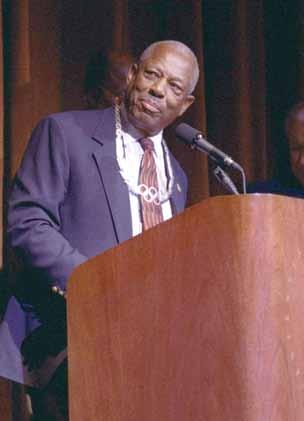
emeritus at North Carolina Central University and president emeritus of the United States Olympic Committee, was born June 14, 1918, in Atlanta, Ga. His career spanned more than 60 years as an educator, coach and mentor. He also lead many national and international organizations in sports and education, and was a member of numerous sports halls of fame.
Walker was a member of the first Knight Commission and was recently named one of CIAA’s 100 Greatest Athletes and Coaches. After earning a bachelor’s, master’s and doctoral degree, Walker
began his career in education at Benedict College in 1941. Following, he took a position with Bishop College and Prairie View A&M in Prairie View, Texas. Walker joined the faculty at North Carolina College (now NCCU) in 1945, where he served as a professor and coach for more than 40 years. Walker assumed leadership positions as department chair and vice provost for financial affairs, then later asas chancellor, after which he retired in 1986.
While serving on the U.S. Department of State Cultural Exchange Program, Walker led the first education contingents to China. He was director of program planning and training for the Peace Corps in Africa.
Walker started North Carolina College’s track team, where he developed a stellar program that produced 111 All-Americans, 40 national champions and 12 Olympians. Walker went on to coach Olympic teams in Israel, Ethiopia, Jamaica, Trinidad & Tobago, Italy and Kenya before being selected as the first African-American head coach of the 1976 Olympic Track & Field Team.
After coaching, Walker served in numerous positions for the United States Olympic Committee, including chair of the budget committee and treasurer. He was elected president of the USOC from 1992-96, leading the 1996 Atlanta Olympic Games.
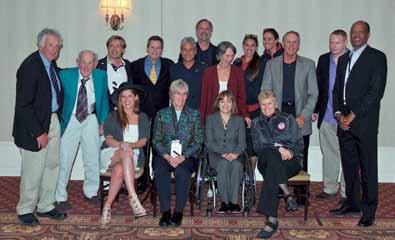
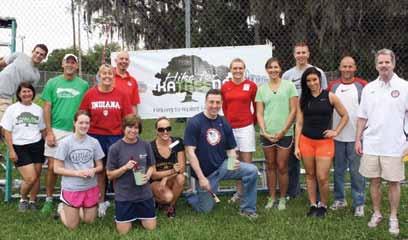

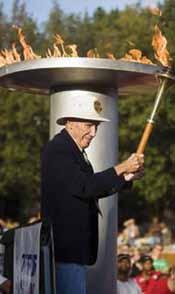

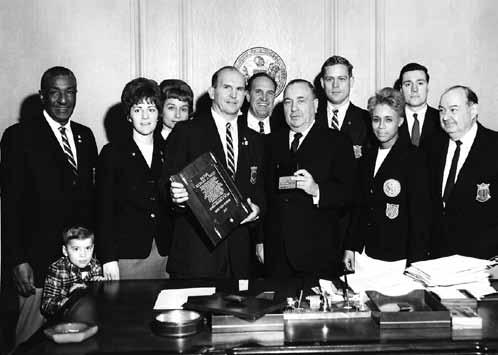
1. Olympians & Paralympians gather for a reunion during the 100 Days Out to London Event at the New York Athletic Club - April 18, 2012.
2. AAC community outreach event in New Orleans - May 11, 2012.
3. Greg Louganis lights the Empire State Building – April 18, 2012
4. Eddie Hart signs autographs at his track clinic – May 5, 2012
5. 1967 Midwest Olympian Photo (taken in Mayor Richard J Daley’s Office) L to R Ralph Metcalf (athletics, 1932, ‘36); Jackie Klein (Uphues) Fie (gymnastics, 1956; Jackie’s son - Jeffrey Scott Uphues, age 4; Barbara Jensen Reeves (swimming, 19480; William Kooistra (waterpolo, 1952, ‘56); Adolph Kiefer – (swimming 1936); Mayor Richard J Daley; Bill Mulliken (swimming 1960); Willye White (athletics, 1956, ‘60, ‘64, ‘68, ‘72); Frank McKinney Jr. (swimming 1956, ‘60); Sam Greller (waterpolo, 1928)
6. Guy Troy (modern pentathlon, 1952) lights the cauldron at the Opening of the State Games in Winston Salem on June 15, 2012. The State Games are North Carolina’s largest multisport festival and one of the largest state games competitions in the country. The athletes will compete in 17 sports at venues in the city and surrounding area.
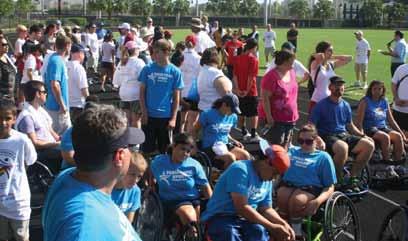
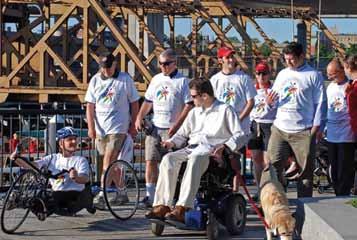
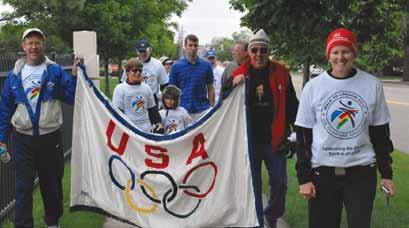
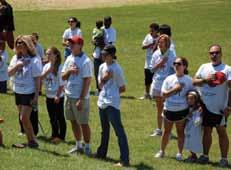
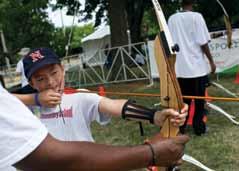
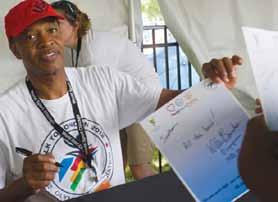

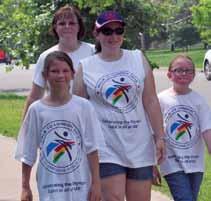
USOC CHAIRMAN
Larry Probst
Robert Bach
James Benson
Scott A. Blackmun
Bob Bowlsby
Ursula M. Burns
Anita L. DeFrantz (rowing, 1976, ‘80)
James S. Easton
John Hendricks
Nina Kemppel (cross country skiing, 1992, ‘94, ‘98, ‘02)
Jair K. Lynch (gymnastics, 1992, ‘96)
Susanne Lyons
Mary McCagg (rowing, 1992, ‘96)
Dave Ogrean
Michael P. Plant (speedskating, 1980)
Angela Ruggiero (ice hockey, 1998, ‘02, ‘06, ‘10)
USOC CHIEF EXECUTIVE OFFICER
Scott A. Blackmun
U.S. OLYMPIANS OFFICERS 2009-12
PRESIDENT
Willie Banks (athletics, 1980, ‘84, ‘88)
VICE PRESIDENTS
Carol Brown (rowing, 1976, ‘80, ‘84)
Caryn Davies (rowing, 2004, ‘08)
Dick Fosbury (athletics, 1968)
Gary Hall, Sr. (swimming, 1968, ‘72, ‘76)
Micki King (diving, 1968, ‘72)
Greg Louganis (diving, 1976, ‘80, ‘84, ‘88)
Linda L. Mastandrea (Paralympic athletics, 1992, ‘96)
IMMEDIATE PAST PRESIDENT
John Naber (swimming, 1976)
PAST PRESIDENT
Bill Toomey (athletics, 1968)
EDITORIAL STAFF
SENIOR EDITOR
Cynthia E. Stinger (team handball, 1984, ‘88, ‘92)
ASSOCIATE EDITOR
Christine Taylor
PRODUCTION DIRECTOR
O’Shea Design
Photos by: Getty Images & other sources
Alabama Olympians & Paralympians
President: Jennifer Chandler Stevenson (diving, 1976) (205) 313-7436
Arizona Olympians & Paralympians
President: Mike Troy (swimming, 1960) (480) 227-1247
Colorado Olympians & Paralympians
President: Gene Kotlarek (skiing, 1960, ‘64) (303)-807-3911
Florida Olympians
President: Jim Millns (figure skating, 1976) (727) 741-2662
Hawaii Olympians
President: Michael Rothwell (sailing, 1976) (808) 737-8789
Idaho Olympians & Paralympians
President: Dick Fosbury (athletics, 1968) (208) 720-2352
Indiana Olympians
President: Ollan Cassell (athletics, 1964) (317) 466-0444
Michigan Olympians & Paralympians
President: Judi Brown Clarke (athletics, 1984) (517) 881-6710
Midwest Olympians & Paralympians
President: Diane Simpson Bundy (rhythmic gymnastics, 1988) (847) 452-7843
Missouri/Illinois Olympians & Paralympians
President: John Carenza (soccer, 1972) (314) 846-4124
National Capital Area Olympians
President: Arlene Limas (taekwondo, 1988) (540) 720-1988
New England Area Olympians
President: Tina Noyes (figure skating, 1968) (781) 572-5469
New Mexico Olympians & Paralympians
President: Trent Dimas (gymnastics, 1992) (505) 850-2956
Northern California Olympians
President: Greg Massialas (fencing, 1980, ‘84, ‘88) (415) 441-0521
Oregon Olympians
President: Lisa Kosglow (skiing, 1998, ‘02) (541) 400-9061
Southern California Olympians
President: Cathy Marino (canoe/kayak, 1988, ‘92) (714) 847-5596
Southwest Olympians
President: Sammy Walker (weightlifting, 1976) (469) 955-3158
Tri-States Olympians
President: Otis Davis (athletics, 1960) (201) 392-8448
Utah Olympians
President: Debra Stark (gymnastics, 1972) (801) 369-9918
Washington State Olympians
President: John Stillings (rowing, 1984) (206) 440-0708
Western PA-OH-WVA Olympians
President: Jeff McLaughlin (rowing, 1988, ‘92) (412) 253-0857
No chapter in your area?
Interested in starting a chapter?
Contact the U.S. Olympians
Association office for details at (800) 717-7555